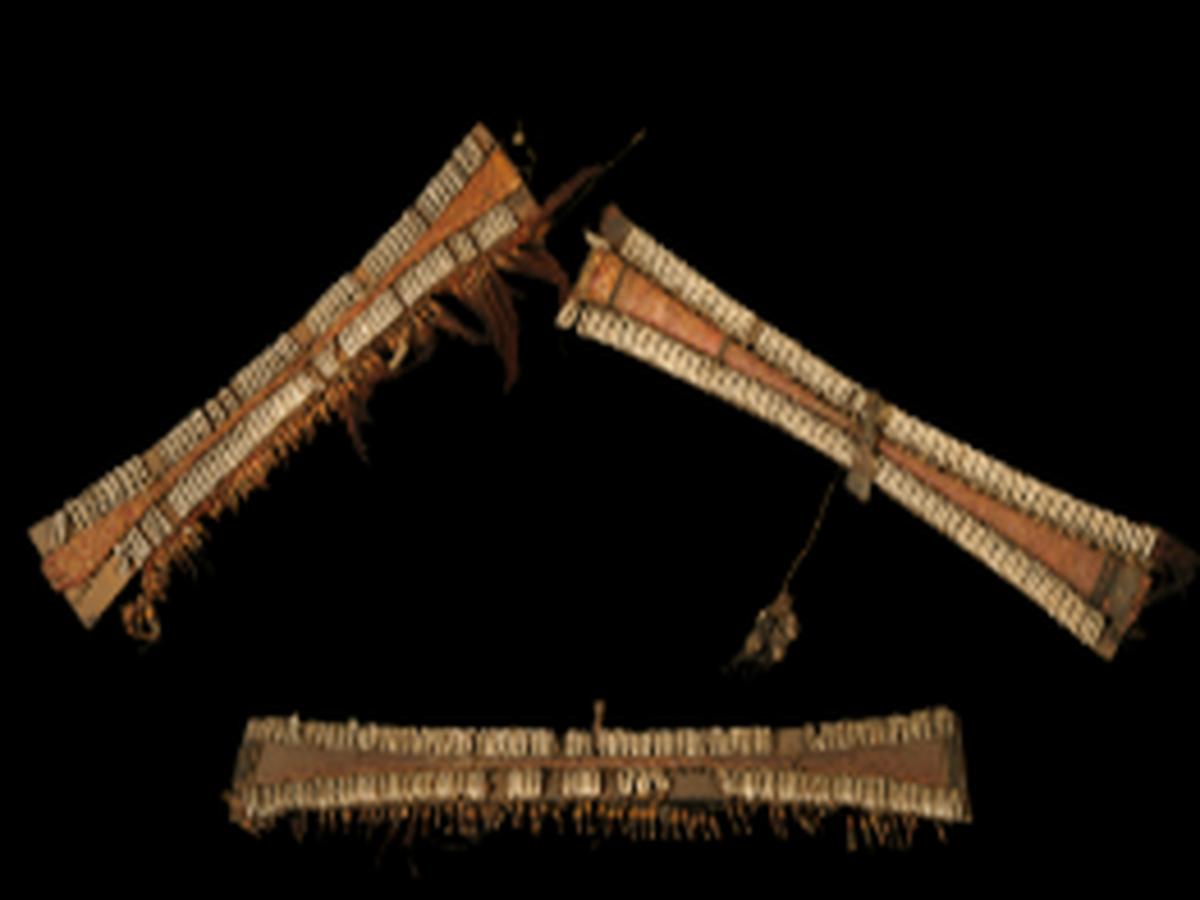State
Tribe Name
Art Type
short description
Naga wooden kilts refer to the ceremonial wear of a rare and unique tribal community norm. This tribal community belongs to the North-Eastern part of India, Nagaland. Here, these kilts are made of three flat wooden pieces, having a constricted middle part and are thus shaped for stylized and functional use appropriate to traditional wear. What makes these especially different from any other such garment is that each of them has a patterned decoration on it. Each wooden piece is beautified by cane strip, cowries (shells), goat's hair, and orchid skin, materials that carry aesthetic and cultural patterns of value in Naga society.
Thumbnail

Filter Postion
Left
Filter Background
Off
Theme
Filter Header Image

content
Image

description
Naga wooden kilts refer to the ceremonial wear of a rare and unique tribal community norm. This tribal community belongs to the North-Eastern part of India, Nagaland. Here, these kilts are made of three flat wooden pieces, having a constricted middle part and are thus shaped for stylized and functional use appropriate to traditional wear. What makes these especially different from any other such garment is that each of them has a patterned decoration on it. Each wooden piece is beautified by cane strip, cowries (shells), goat's hair, and orchid skin, materials that carry aesthetic and cultural patterns of value in Naga society.
Cane is one of the commonly used materials in Naga crafts as it is quite strong and flexible, while cowries were used in the past to symbolize wealth and spirituality. The goat's hair and orchid skin, when viewed together, create a very dramatic and decorative finish, perhaps signifying the social class, achievements, or role of the person in ritual ceremonies who wears them. These types of kilts would have probably been worn during important tribal festivals or rituals by warriors or elders, signifying identity, valor, and heritage. The craft works well in terms of practicality, using all-natural local materials to create an artistic expression. today, they rest in the Indian Museum, Kolkata, providing convincing evidence for a glimpse into the past of what they mean as clothing and ceremonial practices of the Naga people. They thus represent not just forms of clothing but silent witnesses of an active cultural legacy for the Naga tribe.
Cane is one of the commonly used materials in Naga crafts as it is quite strong and flexible, while cowries were used in the past to symbolize wealth and spirituality. The goat's hair and orchid skin, when viewed together, create a very dramatic and decorative finish, perhaps signifying the social class, achievements, or role of the person in ritual ceremonies who wears them. These types of kilts would have probably been worn during important tribal festivals or rituals by warriors or elders, signifying identity, valor, and heritage. The craft works well in terms of practicality, using all-natural local materials to create an artistic expression. today, they rest in the Indian Museum, Kolkata, providing convincing evidence for a glimpse into the past of what they mean as clothing and ceremonial practices of the Naga people. They thus represent not just forms of clothing but silent witnesses of an active cultural legacy for the Naga tribe.
Image Mode
landscape
promoted
On
Verified
Off
